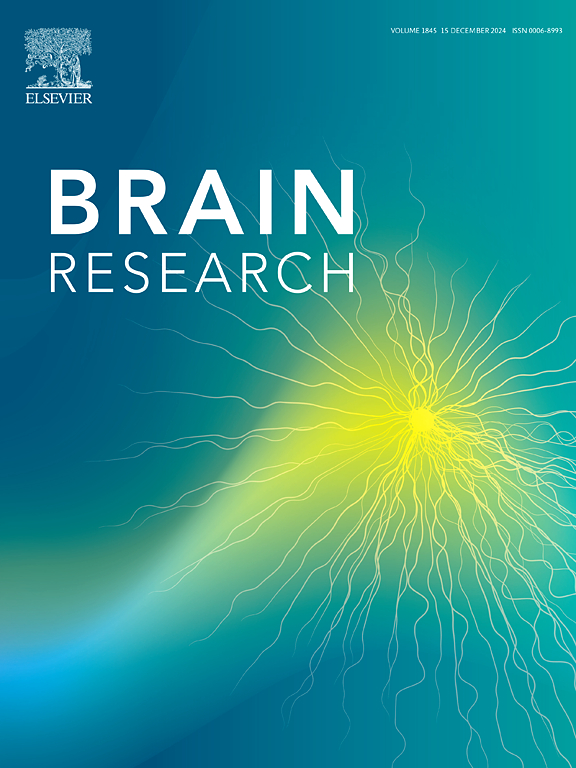Alzheimer’s disease: a jigsaw puzzle comprised of different types of programmed cell death pieces
IF 2.6
4区 医学
Q3 NEUROSCIENCES
引用次数: 0
Abstract
Alzheimer’s disease (AD), a prevalent neurodegenerative disorder among elderly populations, arises from complex interactions between genetic and environmental risk factors. Currently affecting over 55 million elderly individuals globally, AD cases are projected to reach approximately 150 million by 2050 due to demographic aging trends. AD is characterized by extracellular accumulated amyloid plaques (Aβ plaques), intracellular aggregated neurofibrillary tangles (NFTs), and extensive neurodegeneration caused by neuronal and neural cell death. Many investigations have proven assorted types of programmed cell death (PCD) contribute to the neurodegenerative process of AD, and many review articles have summarized the role of PCD in AD pathogenesis. While numerous experimental studies have demonstrated the involvement of various programmed cell death (PCD) pathways in Alzheimer’s disease (AD) pathogenesis, existing review articles lack comprehensive mechanistic integration. This review systematically evaluates all PCD-AD associations, including apoptosis, autophagy, necroptosis, parthanatos, phagoptosis, pyroptosis, NETosis, ferroptosis, and cuproptosis. Different from other existing reviews, this paper emphasizes that the pathogenesis of AD results from the combined involvement of multiple types of PCD (programmed cell death), rather than isolated pathways. Additionally, the roles of valence-variable metal ions in the pathogenesis of AD are also discussed.
阿尔茨海默病:由不同类型的程序性细胞死亡片段组成的拼图
阿尔茨海默病(AD)是一种在老年人群中普遍存在的神经退行性疾病,是遗传和环境风险因素复杂相互作用的结果。阿尔茨海默病目前影响着全球5500多万老年人,由于人口老龄化趋势,预计到2050年阿尔茨海默病病例将达到约1.5亿。阿尔茨海默病的特征是细胞外积聚的淀粉样斑块(Aβ斑块),细胞内聚集的神经原纤维缠结(nft),以及由神经元和神经细胞死亡引起的广泛神经变性。许多研究已经证实,各种类型的程序性细胞死亡(PCD)参与了阿尔茨海默病的神经退行性过程,许多综述文章总结了PCD在阿尔茨海默病发病机制中的作用。虽然大量的实验研究已经证明各种程序性细胞死亡(PCD)途径参与阿尔茨海默病(AD)的发病机制,但现有的综述文章缺乏全面的机制整合。本综述系统地评估了所有与PCD-AD相关的疾病,包括细胞凋亡、自噬、坏死坏死、旁咽下、吞噬、焦亡、NETosis、铁坏死和铜坏死。与其他文献不同的是,本文强调AD的发病机制是多种PCD(程序性细胞死亡)的共同参与,而不是孤立的通路。此外,本文还讨论了价可变金属离子在AD发病机制中的作用。
本文章由计算机程序翻译,如有差异,请以英文原文为准。
求助全文
约1分钟内获得全文
求助全文
来源期刊

Brain Research
医学-神经科学
CiteScore
5.90
自引率
3.40%
发文量
268
审稿时长
47 days
期刊介绍:
An international multidisciplinary journal devoted to fundamental research in the brain sciences.
Brain Research publishes papers reporting interdisciplinary investigations of nervous system structure and function that are of general interest to the international community of neuroscientists. As is evident from the journals name, its scope is broad, ranging from cellular and molecular studies through systems neuroscience, cognition and disease. Invited reviews are also published; suggestions for and inquiries about potential reviews are welcomed.
With the appearance of the final issue of the 2011 subscription, Vol. 67/1-2 (24 June 2011), Brain Research Reviews has ceased publication as a distinct journal separate from Brain Research. Review articles accepted for Brain Research are now published in that journal.
 求助内容:
求助内容: 应助结果提醒方式:
应助结果提醒方式:


